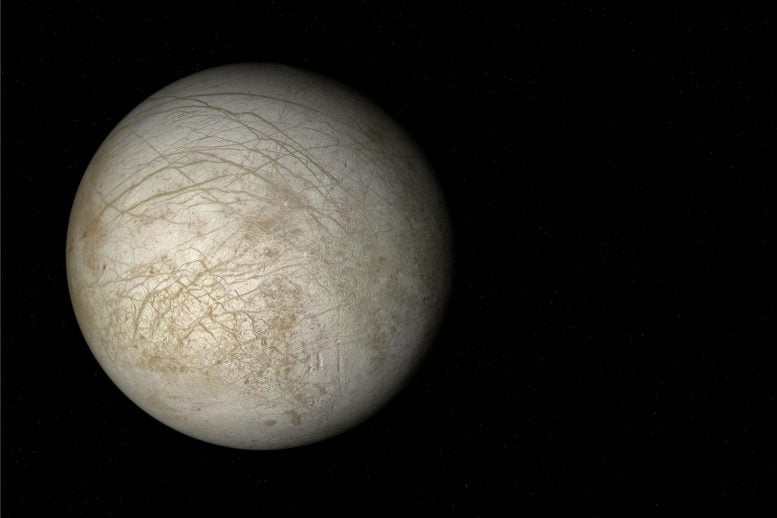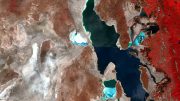
Researchers at Purdue University have provided new insights into the thickness of Europa’s ice shell, suggesting it is at least 20 kilometers thick based on the analysis of impact craters. This discovery is pivotal for understanding the moon’s geological activity and its potential to support life.
Jupiter’s icy moon may be the next place where humans find life, but first, they need to understand its structure.
Planetary physics can often feel like being in a snowball fight. When given an already-formed snowball, most people can leverage their experience and the texture of the snowball to determine its composition: whether it’s made of soft, packable snow or hard, icy snow.
Using nearly the same principles, planetary scientists have been able to study the structure of Europa, Jupiter’s icy moon.
Europa is a rocky moon, home to saltwater oceans twice the volume of Earth’s, encased in a shell of ice. Scientists have long thought that Europa may be one of the best places in our solar system to look for nonterrestrial life. The likelihood and nature of that life, though, heavily depend on the thickness of its icy shell, something astronomers have not yet been able to ascertain.
Recent Discoveries About Europa
A team of planetary science experts including Brandon Johnson, an associate professor, and Shigeru Wakita, a research scientist, in the Department of Earth, Atmospheric, and Planetary Sciences in Purdue University’s College of Science, announced in a new paper published in Science Advances that Europa’s ice shell is at least 20 kilometers thick.
To reach their conclusion, the scientists studied large craters on Europa, running a variety of models to determine what combination of physical characteristics could have created such a surface structure.
“This is the first work that has been done on this large crater on Europa,” Wakita said. “Previous estimates showed a very thin ice layer over a thick ocean. But our research showed that there needs to be a thick layer — so thick that convection in the ice, which has previously been debated, is likely.”
Using data and images from the spacecraft Galileo, which studied Europa in 1998, Johnson analyzed the impact craters to decode truths about Europa’s structure. An expert in planetary physics and colossal collisions, Johnson has studied almost every major planetary body in the solar system. Scientists have long debated the thickness of Europa’s ice shell; no one has visited to measure it directly, so scientists are creatively using the evidence at hand: the craters on Europa’s icy surface.
Video of impact simulation. Credit: Purdue University
The Significance of Impact Craters
“Impact cratering is the most ubiquitous surface process shaping planetary bodies,” Johnson said. “Craters are found on almost every solid body we’ve ever seen. They are a major driver of change in planetary bodies. When an impact crater forms, it is essentially probing the subsurface structure of a planetary body. By understanding the sizes and shapes of craters on Europa and reproducing their formation with numerical simulations, we’re able to infer information about how thick its ice shell is.”
Europa is a frozen world, but the ice shelters a rocky core. The icy surface, though, is not stagnant. Plate tectonics and convection currents in the oceans and the ice itself refresh the surface fairly frequently. This means the surface itself is only 50 million to 100 million years old — which sounds old to short-lived organisms like humans, but is young as far as geological periods go.
That smooth, young surface means that craters are clearly defined, easier to analyze, and not very deep. Their impacts tell scientists more about the icy shell of the moon and the water ocean below, rather than conveying much information about its rocky heart.
“Understanding the thickness of the ice is vital to theorizing about possible life on Europa,” Johnson said. “How thick the ice shell is controls what kind of processes are happening within it, and that is really important for understanding the exchange of material between the surface and the ocean. That is what will help us understand how all kinds of processes happen on Europa — and help us understand the possibility of life.”
Reference: “Multiring basin formation constrains Europa’s ice shell thickness” by Shigeru Wakita, Brandon C. Johnson, Elizabeth A. Silber and Kelsi N. Singer, 20 March 2024, Science Advances.
DOI: 10.1126/sciadv.adj8455
The study was funded by the NASA Solar Systems Working Program.









Be the first to comment on "The Thick Ice of Europa: A Barrier or a Gateway to Alien Life?"